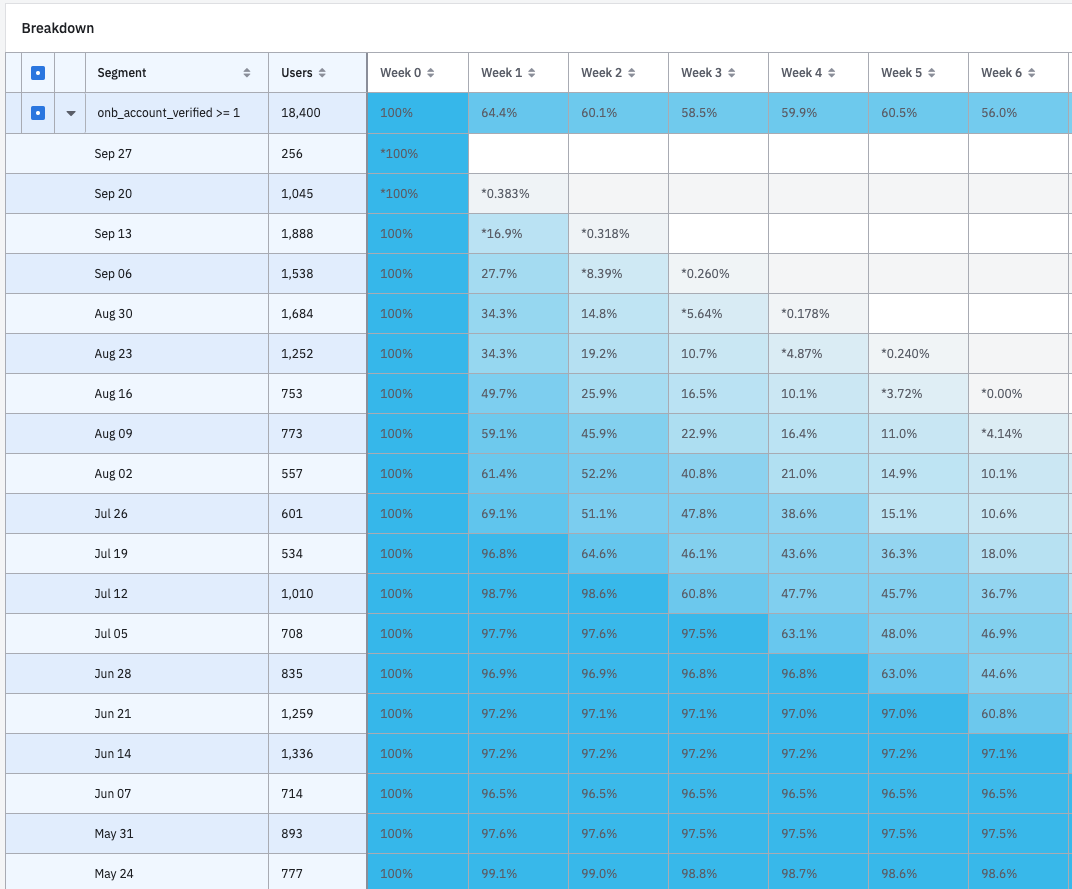This is the expected result when using Unbounded Retention.
In Unbounded Retention, the user is considered retained if they have performed the follow-up event (in your case, any event) at any point after the starting event, and they’ll marked as retained for all the weeks, up until the point in time they performed the latest follow-up event.
Let’s say you have 100 new users in one week.
During Week 1, 20 of them come back. Your retention for Week 1 is at 20%.
During Week 2, 25 of them come back, but 10 of them are same as during Week 1. So that’s 15 new users. Your retention for Week 1 is now at 35%, and your retention for Week 2 at 15%.
During Week 3, 20 users come back, 5 for the first time. Your retention for Week 1 is now at 40%.
Essentially, the longer it has been since the starting date, the more time the users have had time to come back, and more your retention creeps up. Up until it reaches some saturation point.
If you want to compare weeks to weeks, use N-Day Retention instead. It gets rid of this factor.
Both approaches have their place, but it’s good to be aware of how they’ll affect your results.
Hope this helps!








